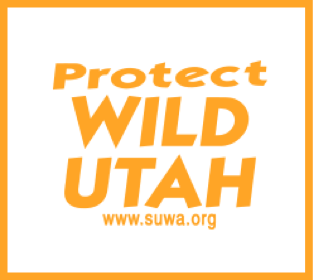|
Contact:
Although the agency aborted its plan to institute a 5-year decision that would have allowed a 400% annual increase in motorized use of Arch Canyon, the BLM’s decision remains controversial. The agency issued the decision over the objections of the Hopi Tribe, the Navajo Utah Commission, the National Trust for Historic Preservation, independent archaeology, biology and riparian experts, local businesses, approximately 24,000 citizens from around the country, and conservation groups who raised concerns about damages to cultural and natural resources. The BLM’s decision will increase the number of motorized visitors in the 8-mile stretch of Arch Canyon where a lush and rare desert stream winds through a deep sandstone-walled canyon harboring numerous archaeological sites, some approximately one thousand years old. The decision authorizes approximately 12,000 additional vehicle crossings of the stream, that will cause soil erosion, siltation and other impacts to a “sensitive” fish species and amphibians -- which breed and lay eggs at the same time as the jeep events approved by BLM’s decision. Mark Maryboy, former Navajo Tribal Councilman noted that BLM has not fulfilled its legal obligation to consult with the Navajo, even though the Navajo Utah Commission formally requested that BLM do so before issuing decisions in the Arch Canyon area, an area with special significance to the Utah Navajos. “The BLM has ignored the Utah Navajo’s concerns for lands and resources that have important cultural and traditional values for Utah Navajos, and would instead allow jeeps to damage this place simply for fun. Preservation of this canyon and the surrounding area is important to our cultural and spiritual values. We urge the BLM to recognize our cultural, traditional, and ceremonial interests in this place.” Similarly, in a letter dated April 6, 2007, the Hopi Tribe notified the BLM that the approval of ORV events in Arch Canyon has “the potential to adversely affect identified and unidentified cultural resources significant to the Hopi Tribe . . . And, therefore, [the Hopi Tribe requests] the interim closure of the Arch Canyon road.” Noting the rushed environmental review, the Hopi’s letter states that BLM appears to be “driven by a timetable of accommodation allowing minimal [environmental] review.” Indeed, San Juan County Commission meeting minutes from last fall include references to BLM working closely with the County to assure that this permit was issued in time for the April Jeep Jamboree event.
A professional archaeologist who has conducted surveys in Arch Canyon estimates that there are approximately 100 sites in the canyon, but less than one-fourth of these have been recorded. “BLM’s decision to approve new ORV events in Arch Canyon, even though it acknowledges that it does not know the location and extent of archaeological sites in the canyon, is akin to throwing darts blindfolded, except the consequences are much greater than a couple holes in the wall,” says Veronica Egan, Great Old Broads for Wilderness. “It is unconscionable that BLM is not willing to protect a beautiful canyon with such significant cultural, archaeological, and natural values,” said Liz Thomas with the Southern Utah Wilderness Alliance. Thomas adds, “There are thousands of miles of dirt roads in southeastern Utah that would be much more appropriate for motorized vehicle events, but BLM appears to be caving in to local political pressure.” Arch Canyon has been the site of previous, controversial ORV events. In 2004, Lynn Stevens, a San Juan County Commissioner, and Governor Huntsman’s Coordinator of the Public Lands Coordinating Office, defied the BLM and led the Jeep Jamboree ORV event in Arch Canyon, after BLM had denied the permit application. Recently, the Navajo Utah Commission asked the Governor to remove Stevens from his post as PLPCO chief and from the Board of Trustees of the Utah Navajo Trust Fund due to Stevens’ demonstrated lack of sensitivity to Native American concerns.
|
|
|
|||||

 Southern Utah Wilderness Alliance
Southern Utah Wilderness Alliance
Protecting Utah's Redrock Country


